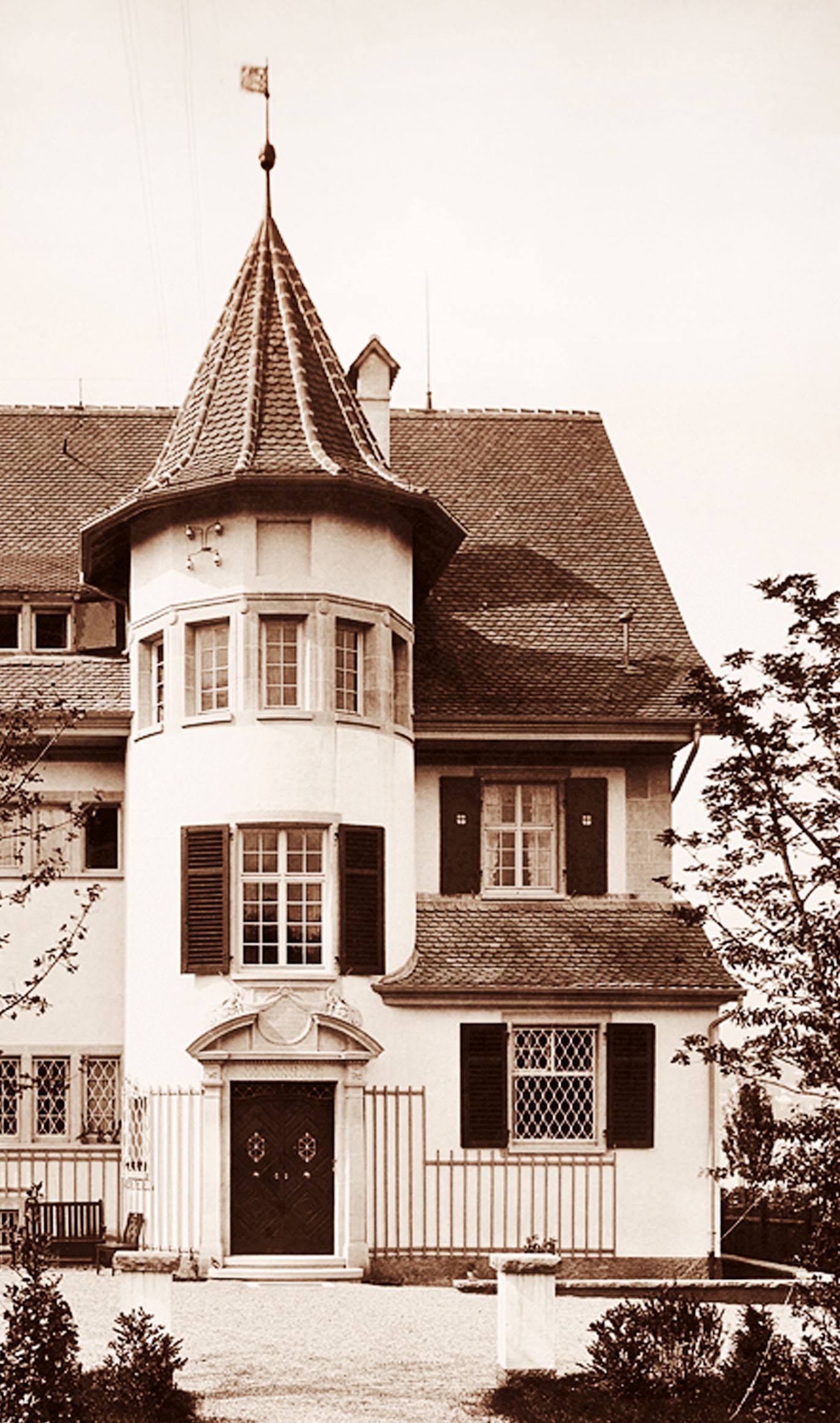- DE
- EN

"VOCATUS ATQUE NON VOCATUS DEUS ADERIT
Gerufen und nicht gerufen wird Gott da sein."
Inschrift über dem Hausportal
"In 1908 Carl Gustav Jung and his wife Emma Rauschenbach built this house in this placid and serene location." The inscription in Latin adorns the portal of the impressive tower at the front of the C.G. Jung House in Küsnacht. Still today the words chiselled in stone welcome guests to the residence.
When, in 1907, C.G. and Emma Jung-Rauschenbach decided to build a new home, the young family was still living in Zurich where Jung worked as a senior doctor in the “Burghölzli lunatic asylum”. Emma’s wealthy father had recently died and a substantial inheritance provided leeway to start thinking about building a new stately residence for the growing family. The young couple found a suitable plot of land on the shores of the Lake of Zurich in Küsnacht – close to the water as Jung had always wanted. The house was built with the help of a cousin, the architect Ernst Fiechter, with Jung playing an active and significant role in the residence’s design and layout. Many motives from Jung’s earlier thoughts and imaginations, which would heavily occupy him in the later years of his career, flowed into the design, thus, for instance, the precedence of the library over other rooms and the sturdy tower at the front of the house. The family moved to their new home on Seestrasse in 1909. At the same time Jung gave up his work at the clinic and began taking in patients in his private practice at home, in those days a complete novelty. The new setup allowed Jung to merge his work and research with family life, an arrangement he stuck to for the rest of his career.
Emma Jung-Rauschenbach died in 1955, with Jung staying in the house in Küsnacht until his death in 1961 – altogether more than half a century. The residence remained in the family’s possession and was passed down from children to grandchildren. In 2002 the "Foundation C.G. Jung Küsnacht" was established and took over the house with the aim of preserving C.G. and Emma Jung-Rauschenbach’s residence for posterity. The Museum C.G. Jung House is a major part of this endeavour.